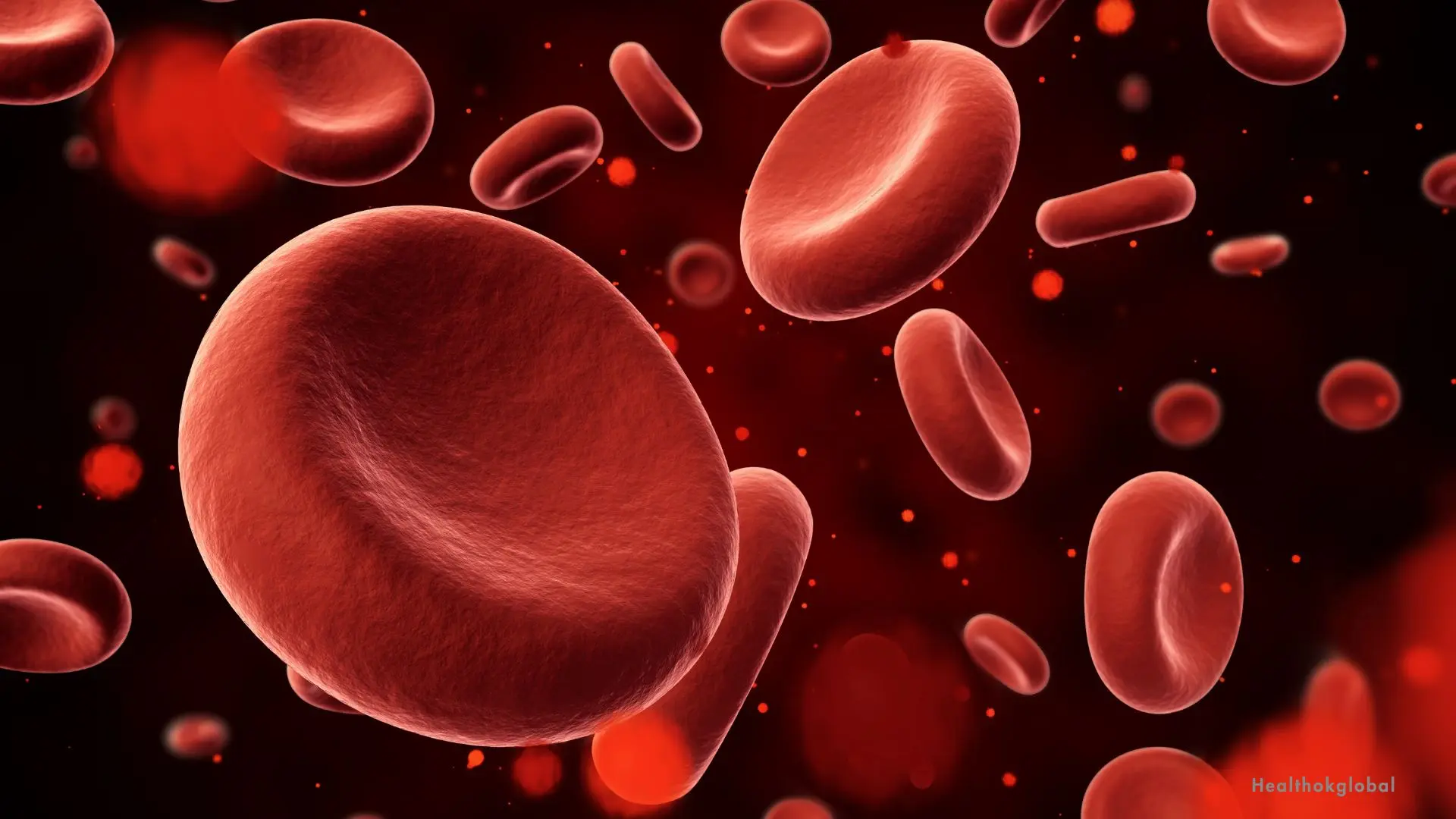The Erythrocyte Sedimentation Rate (ESR) is a blood test that measures the rate at which red blood cells (erythrocytes) settle at the bottom of a test tube over an hour.

Blog
High ESR Symptoms: What They Reveal About Your Health
The Erythrocyte Sedimentation Rate (ESR) is a blood test that measures the rate at which red blood cells (erythrocytes) settle at the bottom of a test tube over an hour. This rate is influenced by the presence of inflammation in the body, which can cause the red blood cells to clump together and settle more quickly. A high ESR indicates the presence of inflammation, which can be due to a variety of underlying conditions. This test is a nonspecific marker, meaning it doesn't pinpoint the exact cause of inflammation but signals that further investigation is needed.
ESR is an essential diagnostic tool used alongside other tests to detect inflammation and monitor the progression or treatment response of inflammatory diseases. It helps healthcare providers identify conditions such as infections, autoimmune disorders, and cancers. By understanding the ESR value in conjunction with clinical symptoms and other diagnostic tests, physicians can form a more comprehensive picture of a patient's health. The ESR test is particularly valuable in tracking chronic conditions over time, allowing for adjustments in treatment plans as needed.
A high ESR often correlates with symptoms of the underlying condition causing the inflammation. While ESR itself does not cause symptoms, it serves as a red flag indicating potential health issues. Common symptoms that might accompany a high ESR include:
Persistent fever and chills are often associated with infections or inflammatory diseases that can elevate ESR. Fever is a common inflammatory response, and its presence alongside a high ESR can indicate an active infection or autoimmune flare.
Chronic inflammation can lead to ongoing fatigue and general weakness, impacting daily activities. This systemic response can be debilitating and affect quality of life, often prompting further medical evaluation.
Sudden and unintentional weight loss can be a sign of underlying diseases such as cancer or chronic infections that elevate ESR. This symptom is particularly concerning and warrants immediate medical attention.
High ESR is linked to a variety of medical conditions, each presenting with its specific set of symptoms. Some of these conditions include:
Bacterial, viral, and fungal infections can all lead to high ESR. Symptoms vary depending on the type and location of the infection but often include fever, pain, and fatigue. Infections prompt an immune response, increasing inflammation and consequently raising ESR levels.
Conditions like rheumatoid arthritis and systemic lupus erythematosus (SLE) cause chronic inflammation, leading to high ESR. Symptoms may include joint pain, stiffness, and swelling. Autoimmune diseases involve the body's immune system attacking its tissues, causing persistent inflammation.
Certain cancers, especially those affecting the blood or lymphatic system, can result in elevated ESR. Symptoms might include fatigue, night sweats, and swollen lymph nodes. Cancers can cause significant inflammatory responses, detectable through an increased ESR.
Infections are a common cause of elevated ESR. When the body fights an infection, the immune response generates inflammation, raising ESR levels. Symptoms depend on the infection's nature and severity but commonly include:
Conditions like pneumonia or tuberculosis can cause high ESR, with symptoms including cough, chest pain, and difficulty breathing. These infections involve significant inflammation in the lungs, leading to elevated ESR.
High ESR can accompany UTIs, presenting symptoms such as painful urination, abdominal pain, and frequent urination. UTIs can cause localized and systemic inflammation, reflected in increased ESR.
Cellulitis or abscesses can cause localized pain, redness, swelling, and increased ESR. The body's immune response to skin infections involves inflammation, contributing to a higher ESR.
Autoimmune disorders involve the immune system mistakenly attacking the body’s own tissues, causing chronic inflammation and high ESR. Common autoimmune diseases linked to elevated ESR include:
RA causes joint inflammation, leading to pain, swelling, and stiffness, primarily in the hands and feet. RA is a chronic condition that leads to persistent high ESR due to ongoing inflammation.
SLE can affect multiple organs, presenting symptoms like joint pain, skin rashes, and kidney issues. The widespread inflammation in SLE results in elevated ESR levels.
This condition involves inflammation of the blood vessels in the head, causing severe headaches, scalp tenderness, and jaw pain. Temporal arteritis can cause significantly high ESR and requires prompt medical treatment.
Chronic diseases often present with persistent inflammation, leading to elevated ESR. Conditions such as inflammatory bowel disease (IBD), chronic kidney disease, and cardiovascular diseases can cause ongoing inflammation, reflected in high ESR levels.
Diseases like Crohn's disease and ulcerative colitis cause chronic inflammation in the digestive tract, leading to symptoms such as abdominal pain, diarrhea, and weight loss, along with high ESR.
Kidney disease can lead to systemic inflammation, presenting symptoms such as fatigue, swelling, and changes in urine output. Elevated ESR is common in chronic kidney disease due to the persistent inflammatory state.
Chronic inflammation plays a role in atherosclerosis and other cardiovascular diseases. Symptoms may include chest pain, shortness of breath, and fatigue. High ESR is often seen in patients with cardiovascular inflammation.
Regular monitoring of ESR is crucial for patients with chronic inflammatory conditions to assess disease activity and treatment efficacy. Management strategies depend on the underlying cause but generally include:
Anti-inflammatory drugs, antibiotics, or immunosuppressants may be prescribed to treat the root cause of high ESR. These medications help reduce inflammation, thereby lowering ESR levels.
A healthy diet, regular exercise, and stress management can help reduce inflammation and improve overall health. Incorporating anti-inflammatory foods and maintaining a balanced lifestyle are essential in managing high ESR.
Ongoing medical evaluations ensure timely detection and management of any changes in disease activity. Regular blood tests, including ESR, help track the progress and effectiveness of treatments.
Certain dietary and lifestyle factors can influence ESR levels. Consuming an anti-inflammatory diet, rich in fruits, vegetables, whole grains, and lean proteins, can help manage inflammation. Additionally, regular physical activity and avoiding smoking and excessive alcohol consumption can positively impact ESR levels.
Foods rich in omega-3 fatty acids, antioxidants, and fiber can help reduce inflammation. Examples include fatty fish, nuts, seeds, berries, and leafy greens.
Regular exercise helps maintain overall health and reduce inflammation. Activities such as walking, swimming, and yoga can be beneficial.
Smoking and excessive alcohol consumption can increase inflammation. Quitting smoking and moderating alcohol intake are crucial steps in managing high ESR.
Interpreting ESR results requires considering various factors, including age, gender, and underlying health conditions. Normal ESR values can vary based on these factors, and slightly elevated ESR may not always indicate a severe condition. It's essential to consult with a healthcare provider to understand the significance of ESR results in the context of overall health.
Typically, normal ESR values range from 0-20 mm/hr for men and 0-30 mm/hr for women. These values can vary slightly depending on the laboratory and population norms.
Slightly elevated ESR may be seen in older adults or individuals with minor infections. In such cases, additional tests and clinical correlation are necessary to determine the cause.
High ESR levels often indicate a more severe underlying condition, such as chronic inflammation, infection, or cancer. Further diagnostic testing is required to identify the cause and initiate appropriate treatment.
High ESR is a significant indicator of inflammation in the body, often associated with various underlying conditions such as infections, autoimmune diseases, and cancers. Recognizing the symptoms linked to high ESR and understanding its implications can aid in timely diagnosis and effective management of the root causes. Regular monitoring, appropriate medical intervention, and lifestyle modifications are essential for controlling inflammation and maintaining overall health. By understanding the symptoms and implications of high ESR, individuals can better recognize potential health issues and seek timely medical advice to address underlying conditions. Maintaining a healthy lifestyle and staying informed about ESR can contribute to overall well-being and improved health outcomes.
HealthOK Global provides expert insights on nutrition, meal planning, and healthy eating habits. Contact our FREE 24 x 7 Healthcare Helpline at +91-8047190955 for assistance.
Certain cancers, especially those affecting the blood or lymphatic system, can result in elevated ESR. Symptoms might include fatigue, night sweats, and swollen lymph nodes. Cancers can cause significant inflammatory responses, detectable through an increased ESR.
ESR is an essential diagnostic tool used alongside other tests to detect inflammation and monitor the progression or treatment response of inflammatory diseases. It helps healthcare providers identify conditions such as infections, autoimmune disorders, and cancers. By understanding the ESR value in conjunction with clinical symptoms and other diagnostic tests, physicians can form a more comprehensive picture of a patient's health. The ESR test is particularly valuable in tracking chronic conditions over time, allowing for adjustments in treatment plans as needed.
Interpreting ESR results requires considering various factors, including age, gender, and underlying health conditions. Normal ESR values can vary based on these factors, and slightly elevated ESR may not always indicate a severe condition. It's essential to consult with a healthcare provider to understand the significance of ESR results in the context of overall health.
Need Personalized Health Guidance?
Get expert advice tailored to your specific health needs from our qualified healthcare professionals.





